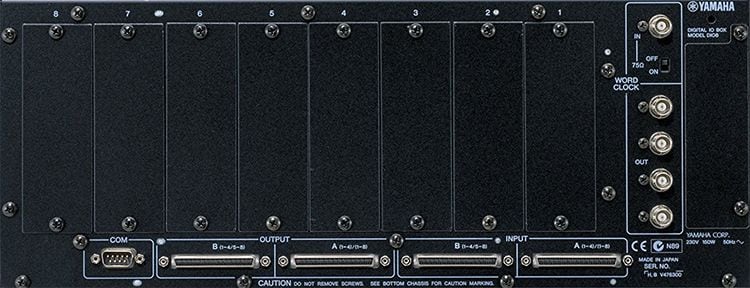CLASSIFICATION OF NETWORKED MIXING SYSTEMS: POWER AND I/O SCOPE.

Thanks to the innovations in digital mixing and gigabit networking - together constituting ‘networked mixing systems’ - audio productions have evolved to unprecedented sizes and quality. This raises the issue of selecting a networked mixing system with enough capacity and functionality to fit a planned audio production. Brochures of mixing system manufacturers often boast of high channel counts and powerful DSP, but not always in a consistent way. To facilitate meaningful assessments, this micro tutorial proposes a classification method to obtain a rough ‘system scope’ assessment based on two properties: processing power scope and i/o scope. These properties are simplified, modelled representations of a system’s capabilities, intended for a rudimentary classification only. Once it comes to details, the manufacturer’s specifications have to be studied, of course.
The first property is processing power ‘P’, composed as a weighed average of three parameters that can be easily derived from the manufacturer’s specification list.
First, the channel strip count, indicated by the letter C. A channel strip constitutes the fixed DSP functionality built in to each mixer input and output channel, normally including a delay, phase, 4-band parametric EQ (PEQ) and one or two dynamic processors. Of course the quantity and quality of the DSP algorithms in a channel strip differs per mixer type and brand, but for this classification method we will make it simple, ignore the differences and count any channel strip by adding the number of mix input channels and the number of mix bus and matrix output channels:

Second, the matrix size, indicated by the letter M. The matrix size is the number of mixing channels multiplied by the number of mix buses. The DSP power needed for a single cross point’s level calculation from input to output is not very large, but with high channel counts the amount of cross points can run into the thousands, requiring considerable DSP power as well as internal DSP data transfer backbone capacity. Some mixers have separate matrix sections with limited bus inputs, other mixers have matrix sections that can mix both inputs and mix buses; in both cases they have to be added as a separate factor:

Note that some mixers have a variable mixing matrix where the sound engineer can allocate a number of channels as input and output. In that case the worst case scenario for DSP power can be used by allocating the i/o count equally to inputs and outputs.
Third, the plug-in DSP power, indicated by the letter I. Here, plug-in quality and power also differ per mixer type and brand, but to make it simple we just count the maximum instances that the mixer’s internal DSP can support:

Note that the use of external plug-ins is of course possible, but this is not counted as the mixer’s own DSP.
The resulting DSP capacity can be calculated by adding the three results, arbitrarily applying a weight to each parameter:

The second property is system i/o scope S, composed as a weighed average of two parameters that can also be derived from the manufacturer’s specification list.
With this property, first there is the maximum i/o capacity of the system that can be used simultaneously with the available physical inputs and outputs. We’ll use the letter X to indicate this parameter, which can be calculated by adding the mixer’s channel inputs, channel insert inputs and outputs, channel direct outputs, bus insert inputs and outputs and bus outputs. However, the resulting value can be constrained by the mixer’s physical i/o capabilities, so the end result should be the lowest of the two.
Second, there is the maximum number of possible inputs that can be chosen from and controlled by the system’s own user interface. Theoretically with networks this number, indicated by the letter Y, is virtually infinite, but the mixer’s operating system usually has a limited capability to control a maximum number of inputs, for example the microphone pre-amplifiers. In most cases Y can be derived by checking the maximum number and size of input racks that can be supported simultaneously.
The resulting system scope can be calculated by adding the two results, arbitrarily applying a weight to each parameter:

This classification method produces results on a scale of 0 to 10 for today’s networked mixing systems.






